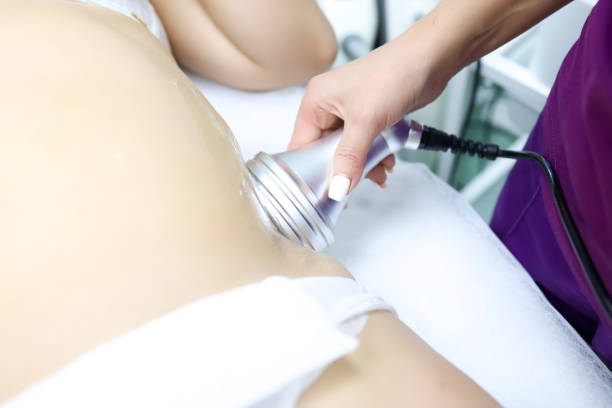Liposuction Explained: Results, Risks & Alternatives
Explore how liposuction reshapes persistent fat deposits and improves body contours. This in-depth guide covers clinical safety data, realistic outcome timelines, recovery expectations, non-surgical alternatives like CoolSculpting and laser therapies, and cost factors to help you decide on body contouring.

Clinical Evidence and Safety
Decades of clinical research indicate that liposuction, when carried out by experienced, board-certified surgeons, is an effective and generally safe option for targeted fat removal. Controlled studies consistently show high levels of patient satisfaction and durable contour improvements, particularly among individuals who keep a stable weight and healthy habits after surgery. Modern refinements — such as the tumescent technique, ultrasound-assisted liposuction (UAL), and laser-assisted liposuction (LAL) — have reduced complication rates and often shortened recovery compared with earlier approaches. No operation is risk-free, but complication rates are low for appropriately selected patients and when surgeons follow established safety protocols and evidence-based practices.
What Results and Recovery Look Like
Liposuction is intended to sculpt and refine localized fat deposits, not to serve as a primary weight-loss tool. Typical treatment zones include the abdomen and flanks, thighs and hips, upper arms and back, the chin and neck, and gynecomastia in men. Because the procedure physically removes fat cells from the treated area, those specific cells will not return. However, the remaining fat cells can still enlarge with significant weight gain, so maintaining a stable weight and healthy lifestyle is essential for long-term contour preservation.
Initial improvements are often noticeable as swelling subsides in the first few weeks. Many patients see a meaningful difference during this period, but the final shape usually becomes apparent between three and six months after surgery, once tissues settle and any residual swelling resolves. Realistic expectations are crucial: liposuction can enhance proportion and remove stubborn pockets, yet it won’t correct major skin laxity. In cases of loose or excess skin, adjunctive procedures such as skin tightening or excisional lifts may be necessary to achieve the desired outcome.
Surgical vs Non-Surgical Fat Reduction
For patients seeking substantial volume removal in one session, traditional liposuction remains the gold standard. Demand for less-invasive options has increased, however; these alternatives can work well for small-to-moderate fat deposits and typically involve less downtime and fewer immediate risks. Non-surgical treatments tend to deliver more gradual and subtle improvements compared with operative liposuction.
| Method | Type | Recovery Time | Results Timeline |
|---|---|---|---|
| Traditional Liposuction | Surgical | 1-2 weeks | 3-6 months |
| CoolSculpting | Non-surgical | None | 2-4 months |
| Ultrasound Therapy | Non-surgical | None | 2-3 months |
| Laser Lipolysis | Minimally invasive | 3-5 days | 1-3 months |
Prices, rates, or cost estimates mentioned in this article are based on the latest available information but may change over time. Independent research is advised before making financial decisions.
Costs, Recovery Details, and Candidate Selection
Costs vary considerably according to how many areas are treated, the complexity of the case, geographic location, the surgeon’s credentials, and facility or anesthesia fees. Typical ranges for a single area fall roughly between $3,000 and $8,000; treating multiple regions or complicated cases will increase the overall price. Ask for a detailed estimate that itemizes the surgeon’s fee, anesthesia, operating room costs, and follow-up visits so you know exactly what is included.
Recovery planning is important. Many patients can return to desk work within one to two weeks, but strenuous exercise and heavy lifting are usually limited for four to six weeks to allow tissues to heal properly. Surgeons commonly recommend compression garments for several weeks to control swelling and support new contours. Multiple post-operative visits enable the surgical team to monitor healing and address any issues early.
Not everyone is an ideal candidate. Best results occur in generally healthy people who are near their target body weight and have localized fat pockets that resist diet and exercise. The preoperative consultation should review medical history, current medications, potential risks, and the expected recovery timeline to ensure appropriate patient selection and realistic goals.
Practical Advice for Prospective Patients
- Select a board-certified plastic surgeon or cosmetic surgeon experienced in the specific liposuction technique you are considering. Review verified before-and-after photos and patient testimonials.
- Anticipate an early period of swelling and bruising; schedule social and professional commitments with that in mind.
- Follow pre- and post-operative instructions precisely, including recommendations to stop smoking well before surgery to reduce complications.
- Commit to balanced nutrition and regular exercise after recovery to help maintain results.
- If excessive skin laxity or muscle separation is a concern, discuss combined or staged procedures (e.g., abdominoplasty) to address contour and skin quality comprehensively.
Liposuction has matured into a reliable option for body contouring when performed for suitable indications. Reviewing clinical evidence, discussing options with an experienced provider, and weighing recovery and financial considerations will help determine whether liposuction aligns with your aesthetic objectives.
This article is for informational purposes only and should not be considered medical advice. Please consult a qualified healthcare professional for personalized guidance and treatment.






